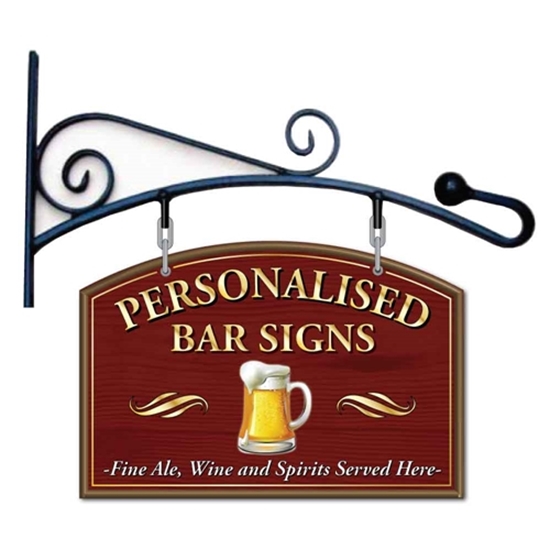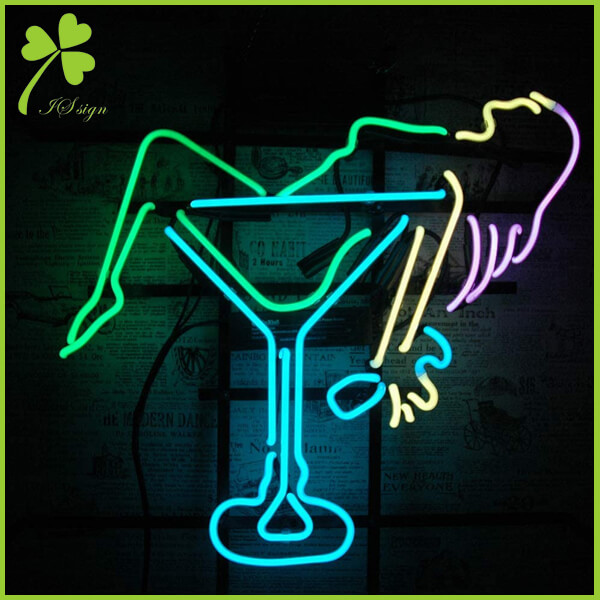Great Ideas On Deciding On Bar Signs
Great Ideas On Deciding On Bar Signs
Blog Article
What Are The Different Functions Of Bar Signs?
Bar signs are used to serve a variety of purposes. Here are several key purposes of bar signs and the ways they differ. Branding
Purpose of this logo: To strengthen and develop the bar's brand.
Often the bar's logo, name, and signature color are usually included. The bar's theme and overall atmosphere should be apparent in the style.
For instance, neon signs with the bar's logo, or metal signs bearing the name of the bar.
2. Informational
Goal: Inform customers about the bar.
Highlights: Clear and easy to read text that conveys important information, like opening hours, Wi Fi passwords for the house, rules of conduct, or the location of bathrooms.
Examples: Signs on the entrance indicating hours of service and signs that point towards restrooms.
3. Decorate your home using these Decorative Items
Goal: To enhance the aesthetic appeal of the bar.
Special Features: They are typically more creatively themed and contribute to the overall design of the bar. May not include any specific text or information.
Examples: Old beer ads funny or quirky signs or themed artwork.
4. Promotional Materials
The purpose of this is to promote a specific product, event, or particular.
Features: Eye-catching designs that highlight offers as well as upcoming events, or new menu items. Add movable or temporary elements.
Examples: Chalkboards that display daily specials, banners advertising happy hours, posters advertising forthcoming events.
5. Directional
The purpose of the guide is to direct customers to the bar.
Features: Arrows that are clear for customers to navigate, e.g. finding restrooms or exits, as well as other areas in the bar.
Examples: Signs pointing towards bathrooms, "Exit" signs, directions arrows to different seating areas.
6. Regulatory/Compliance
Purposes: To comply with all laws and regulations as well as to ensure safety.
The sign must be required to ensure that it fulfills legal obligations. For instance, it can indicate the smoking area or occupancy limit, or emergency escapes.
For example: "No Smoking", occupancy limits, emergency exit signage.
7. Interactive
The goal of the project is to engage customers to participate in an interactive experience.
Features: Elements that encourage patron involvement, like write-on surfaces or interactive digital elements.
Signs that have QR codes that connect to digital menus, social media sites or other information sources.
8. Thematic
The aim of this theme is to establish a mood or atmosphere. particular mood.
Highlights: Signs that fit the theme of the bar and add to the overall atmosphere.
Examples: Pirates-themed signage on an ocean-themed bar. Wooden signs with rustic designs in a bar with a country theme.
9. Menu
Purpose: To display the bar's menu offerings.
The list of food and drinks is typically listed clearly, along with their costs. It can be static or changeable.
Digital screens, for example, that rotate menus as well as wall-mounted drinks menus.
Every bar sign serves specific functions, and it is made to blend into the bar's atmosphere. When you know the differences the bar's owners can choose and place signs to enhance their patrons' experience and fulfill their business needs. Have a look at the top rated from this source for cocktail bar sign for website advice including pub signs for garden, the staying inn sign, personalised outdoor bar signs, personalised beer sign, large bar signs, to the bar sign, personalised outdoor pub signs, pub signs made, personalised home pub sign, the staying inn sign and more.
What Is The Difference Between Bar Signs When It Comes To Customisation And Personalisation
Bar signs are available in a range of styles and customization options which reflect the distinctive aesthetic, style and personality of every business. Below are the various types of bar signs in terms of customization and personalization. Material
The materials that can be customized include wood and metals (acrylic), neon, chalkboards, LEDs, vinyl and many more.
Personalization - Select materials that fit the theme of your bar.
2. Design
Custom Graphics can include logos, illustrations, typography or artwork.
Personalization: Add distinctive elements of your brand, images or themes to convey the identity of your bar.
3. Size and Shape
Custom Sizes: from small outdoor marquees to large tabletop signs.
Personalization: Customize the dimensions and shapes of your signs to suit particular spaces and to accommodate branding requirements, like big letters for a bold piece or compact signs for smaller spaces.
4. Color
Custom Color Schemes, including Pantone matching, RGB and custom finishes.
Personalization - Select colors that are in line with the branding, interior decor of the bar and preferences of its target audience. These can be bright and bold, or soft and sophisticated.
5. Lighting
Custom Lighting Effects: Neon LED backlit, edge-lit or projection.
Personalization: Pick lighting that will enhance visibility while also aligning the bar theme and desired atmosphere. Examples include neon for retro vibes or LED to add modern flair.
6. Text Messaging
Custom Text: Bar name, slogans, quotes, menu items, event announcements.
Personalization: Create bespoke messaging that resonates with customers, reflect the bar’s persona and effectively communicate promotions or specials, as well as brand values.
7. Interactivity
Custom Interactive Features Digital displays, QR codes, or interactive projections.
Personalization: Create memorable experiences by incorporating interactive elements such as digital menu boards, interactive games.
8. Installation of the Mounting
Custom-designed mounting solutions for wall-mounted, freestanding or hanging.
Personalization - Choose mounting options to complement the bar layout, enhance visibility and blend seamlessly into your overall design plan.
9. Seasonal and Event-Specific
Custom themes for holiday decorations, seasonal motifs or themed events.
Personalization: Regularly update signs to reflect seasonal changes, or to celebrate holidays. It is also possible to promote particular events. This creates a lively environment that is enthralling for customers.
10. Brand Consistency
Custom Branding Custom Branding: Colors, fonts, logos, images.
Personalization: Be sure to maintain uniformity across all signage and branding materials to reinforce brand identity, build brand recognition, and create an aesthetically pleasing experience for patrons.
Benefits of Customization and Personalization
Brand Differentiation. Make your brand stand out from the rest and create a memorable impact.
Brand Identity: Enhance brand identity by promoting customer loyalty.
Atmosphere Improvement: Customize the signage to fit the bar's atmosphere and atmosphere. This will enhance the overall experience of customers.
Engagement: Personalized signage can inspire excitement and patron interaction.
Bar owners can use the flexibility of customization and personalization to design signage that is not just unique but also adds to their bar's appearance, atmosphere and brand. Take a look at the best garden bar signs for blog tips including pub wall sign, design your own bar sign, garden bar sign personalised, bar pub signs, bar wall signs, staying inn sign, pub signs made, personalised outdoor bar signs, pub wall sign, pub signs for garden and more.
What Are The Differences Between Bar Signposts And Regulations?
Signs for bars are subject to various regulations to the local, state and federal authorities to ensure the safety of people, aesthetic standards, as well as adherence to Zoning rules. Here are the differentiators between bar signs as well as their rules. There are rules regarding the size and position of signs.
Zoning law: This is a set of regulations that determine where signs may be located, their height, size and distances from property lines, road or other nearby structures.
Historical Districts - Signs can be restricted in dimensions, style, and material to preserve certain areas' historic character.
2. Illumination Restrictions
Light Pollution - Regulations may limit the brightness and color of signs that are illuminated in order to maintain the nighttime ambience and reduce light pollution.
Safety considerations Signs should not produce glare and should not hinder drivers or pedestrians, especially when placed near the road.
3. Signage Content
Alcohol Advertising Certain jurisdictions have restrictions on advertising for alcohol. This includes the prohibition of certain images or content that entices minors or encourages excessive drinking.
Health Warnings: The law may mandate health warnings be displayed on signs about smoking and drinking alcohol.
4. Historic Preservation Regulations
Signs that are located in historic districts have to be compatible to the style of architecture or character of the district. This requires the approval of preservation boards.
Design and Materials - Limitations could be placed on design, materials, design, or color schemes to guarantee the integrity of historical records.
5. Sign Permitting Process
Permit Requirements: Bar owners must get permits prior to installing or modifying signs, which could require the submission of plans, payment of fees, and obtaining approval by local authorities.
Code Compliance: In order to ensure accessibility and security to the public, signs must adhere to building codes, safety regulations, and accessibility standards.
6. Sign Repair and Removal
Maintenance Requirements. It is the responsibility of the owner of the bar to ensure that the signs are in good condition, structurally sound with no dangers, and in compliance with the regulations.
Signs that are abandoned or damaged: In order to avoid pollution and preserve the beauty in an area, there may be laws regarding the removal of signs which are abandoned or deteriorating.
7. Digital Signage Regulations
Content Restrictions There are laws which regulate the content of digital signs. They could ban certain types of content, such as offensive images or lights that flash.
Digital Signage Operating Limits - Regulations could restrict brightness and motion, or the frequency of changes for digital signs in order to minimize the visual clutter as well as distracting distractions.
8. Penalties and Enforcement
Inspections: Local authorities carry out periodic inspections in order to ensure compliance with sign regulations. Citations are issued for violations.
Penalties: Penalties for not complying could include fines, citations for removal or alter signs, or legal action.
9. Sign Variance Process
Variance applications: Bar owners can apply for variances that allow them to depart from the norms for signage by proving the justification for the variance as well as minimizing any negative impact on aesthetics or public safety.
Public Input : Disagreements may be a cause for hearings in the community, or involvement from businesses or property owners.
10. Participation and Engagement of the Community
Public Consultation: Certain authorities involve local residents in the development of signage regulations via public forums, surveys, or stakeholder consultations.
Sign regulations could have community Benefits for Communities. Sign regulations can include provisions that enhance the quality of signage, promote local businesses, or revive neighborhoods.
Bar owners who are aware of and comply with signage regulations will ensure that their signage attract customers, thereby contributing positively to their local community, and complying with the legal regulations. This will reduce the risk of legal issues as well as penalties or fines. Read the recommended see post about garden bar signs for more recommendations including bar pub signs, to the pub sign, bar hanging sign, gin bar sign, large bar signs, cocktail bar sign, personalised garden pub sign, hanging home bar signs, large personalised bar signs, cocktail bar sign and more.